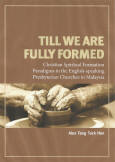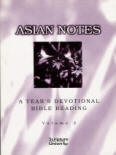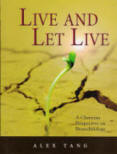Stories We Listen To - Your Story, My Story, His Story:
Metanarratives and the Christian Life
Whether we are aware of it or not, stories we listen are
influencing the how we think, how we see or perceived everyday things and how
we develop our values. When we hear the word ‘story’, we usually think of
fiction as stories in books or movies. Sociologists and philosophers had long
understood that stories or narratives may are not just fiction but the
determining factor in how we live our lives. The stories that we listen to have
the ability to shape our reality. These reality-shaping stories are also known
as worldview.
We have been studying the Gospel according to Matthew. We
have studied the genealogy of Jesus Christ in Matthew 1:1-17. We have seen that
the genealogy was divided into three section of fourteen generations each; from
Abraham to David, David to the Exile, and Exile to Jesus. Since the number
seven is a very special number in Jewish numerology (indicates completeness and
perfection), each section is 2 x 7 which makes fourteen. This implies that the
generations from Jesus onward is the seventh of the sevens generation, making
it a very special generation. Matthew proceeds to tell us how special this
generation is by telling us the story of the birth of Jesus Christ
(Matt.1:18-25).
Before we examine the story itself, we shall look at some of
the stories Matthew’s listeners are hearing. The prevailing stories/worldview according to Scot McKnight
in his book Kingdom Conspiracy (2014)
during the time of Jesus are:
•
The
eschatological battle of God in the Psalms of Solomon
•
The
Maccabean and Zealot strategy of holy warfare
•
The
Essene strategy of holy withdrawal
•
The
Pharisee push for great zeal for Torah obedience
•
The
Sadducee strategy of realism by cooperating with Rome
Note about extra biblical writings,
bible and Jewish History:
1. Pseudepigrapha
Pseudepigrapha (also Anglicized as "pseudepigraph"
or "pseudepigraphs") are falsely attributed works, texts whose
claimed author is represented by a separate author, or a work "whose real
author attributed it to a figure of the past". The word pseudepigrapha
(from the Greek: ψευδής, pseudes, "false" and ἐπιγραφή, epigraphē,
"name" or "inscription" or "ascription"; thus
when taken together it means "false superscription or title") is the
plural of "pseudepigraphon" (sometimes Latinized as
"pseudepigraphum").
Pseudepigraphy covers the false ascription of names of
authors to works, even to authentic works that make no such claim within their
text. Thus a widely accepted but incorrect attribution of authorship may make a
completely authentic text pseudepigraphical. Assessing the actual writer of a
text locates questions of pseudepigraphical attribution within the discipline
of literary criticism.
In Old Testament biblical studies, the term Pseudepigrapha
typically refers to an assorted collection of Jewish religious works thought to
be written c 300 BC to 300 AD. They are distinguished by Protestants from the
Deuterocanonical (Catholic and Orthodox) or Apocrypha (Protestant), the books
that appear in the Septuagint and Vulgate but not in the Hebrew Bible or in
Protestant Bibles. Catholics distinguish only between the deuterocanonical and
all the other books, that are called biblical Apocrypha, a name that is also
used for the pseudepigrapha in the Catholic usage. In addition, two books considered
canonical in the Tewahedo churches, viz. 1 Enoch and Jubilees, are categorized
as "pseudepigrapha" from the point of view of the Chalcedonian
churches.
·
3 Maccabees
· 4 Maccabees
·
Assumption of Moses
·
Ethiopic Book of Enoch (1 Enoch)
·
Slavonic Book of Enoch (2 Enoch)
·
Book of Jubilees
·
Greek Apocalypse of Baruch (3 Baruch)
·
Letter of Aristeas
·
Life of Adam and Eve
·
Martyrdom and Ascension of Isaiah
·
Psalms of Solomon
·
Sibylline Oracles
·
Syriac Apocalypse of Baruch (2 Baruch)
·
Testaments of the Twelve Patriarchs
One of the Pseudepigrapha, the Psalms of Solomon is a group
of eighteen psalms (religious songs or poems) that are not part of any
scriptural canon (they are, however, found in copies of the Peshitta and the
Septuagint). The 17th of the 18 Psalms is similar to Psalm 72 which has
traditionally been attributed to Solomon, and hence may be the reason that the
Psalms of Solomon have their name. An alternate view is that the psalms were so
highly regarded that Solomon's name was attached to it to keep them from being
ignored or forgotten.
The Psalms of Solomon were referenced in Early Christian
writings, but lost to modern scholars until a Greek manuscript was rediscovered
in the 17th century. There are currently eight known 11th- to 15th-century
manuscripts of a Greek translation from a lost Hebrew or Aramaic original,
probably dating from the 1st or 2nd century BCE. However, though now a
collection, they were originally separate, written by different people in
different periods.
Politically, the Psalms of Solomon are anti-Maccabee, and
some psalms in the collection show a clear awareness of the Roman conquest of
Jerusalem under Pompey in 63 BCE, metaphorically treating him as a dragon who
had been sent by God to punish the Maccabees. Some of the psalms are messianic,
in the Jewish sense (clearly referring to a mortal that happens to be divinely
assisted, much like Moses), but the majority are concerned less with the world
at large, and more with individual behaviour, expressing a belief that
repentance for unintended sins will return them to God's favour.
2. The Septuagint
The Septuagint /ˈsɛptjuːəˌdʒɪnt/, /ˈsɛptuːəˌdʒɪnt/,
/ˌsɛpˈtuːədʒɪnt/, /ˈsɛptʃuːəˌdʒɪnt/, from the Latin word septuaginta (meaning
seventy), is a translation of the Hebrew Bible and some related texts into
Koine Greek. As the primary Greek translation of the Old Testament, it is also
called the Greek Old Testament. This translation is quoted in the New
Testament, particularly in the Pauline epistles, and also by the Apostolic
Fathers and later Greek Church Fathers. The title (Greek: Ἡ μετάφρασις τῶν
Ἑβδομήκοντα) and its Roman numeral acronym LXX refer to legendary seventy
Jewish scholars who solely translated the Five Books Of Moses as early as the
late 2nd century BCE. This translation is not extant, except as rare fragments.
The traditional story is that Ptolemy II sponsored the translation of the Torah
(Pentateuch, Five Books Of Moses). Subsequently, the Greek translation was in
circulation among the Alexandrian Jews who were not fluent in Hebrew but fluent
in Koine Greek, which was the lingua franca of Alexandria, Egypt and the
Eastern Mediterranean at the time.
3. The Vulgate
The Vulgate (/ˈvʌlɡeɪt, -ɡɪt/) is a late fourth-century
Latin translation of the Bible that became, during the 16th century, the
Catholic Church's officially promulgated Latin version of the Bible. The
translation was largely the work of St. Jerome, who, in 382, was commissioned
by Pope Damasus I to revise the Vetus Latina ("Old Latin") collection
of Biblical texts in Latin then in use by the Church. Once published, it was
widely adopted and eventually eclipsed the Vetus Latina and, by the 13th
century, was known as the "versio vulgata" (the "version
commonly-used") or, more simply, in Latin as vulgata or in Greek as
βουλγάτα ("Vulgate"). It was made the Catholic Church's official
Latin Bible as a consequence of the Council of Trent (1545–63).
4. The
Deuterocanonical Books (Apocrypha)
Deuterocanonical books is a term used since the 16th century
in the Catholic Church and Eastern Christianity to describe certain books and
passages of the Christian Old Testament that are not part of the current Hebrew
Bible. The term is used in contrast to the protocanonical books, which are
contained in the Hebrew Bible. This distinction had previously contributed to
debate in the early Church about whether they should be classified as canonical
texts. The term is used as a matter of convenience by the Ethiopian Orthodox
Tewahedo Church and other Churches to refer to books of their Old Testament
which are not part of the Masoretic Text. The deuterocanonical books are
considered canonical by Catholics, Eastern Orthodox, Oriental Orthodox, and the
Church of the East, but are considered non-canonical by most Protestants. The
word deuterocanonical comes from the Greek meaning 'belonging to the second
canon'.
The Catholic deuterocanonical scriptural texts are:
·
Tobit
·
Judith
·
Additions to Esther (Vulgate Esther
10:4-16:24)[26]
·
Wisdom (or Wisdom of Solomon)
·
Wisdom of Jesus ben Sira (or Sirach or
Ecclesiasticus)
·
Baruch, including the Letter of Jeremiah
(Additions to Jeremiah in the Septuagint)
·
Additions to Daniel:
o
Prayer of Azariah and Song of the Three Holy
Children (Vulgate Daniel 3:24-90)
o
Susanna (Vulgate Daniel 13, Septuagint prologue)
·
Bel and the Dragon (Vulgate Daniel 14,
Septuagint epilogue)
·
1 Maccabees
·
2 Maccabees
(source: Wiki)
5. Maccabbees
The death of Alexander the Great of Greece in 323 BCE led to
the breakup of the Greek empire as three of his generals fought for supremacy
and divided the Middle East among themselves. Ptolemy secured control of Egypt
and the Land of Israel. Seleucus grabbed Syria and Asia Minor, and Antigonus
took Greece.
The Land of Israel was thus sandwiched between two of the
rivals and, for the next 125 years, Seleucids and Ptolemies battled for this
prize. The former finally won in 198 B.C. when Antiochus III defeated the
Egyptians and incorporated Judea into his empire. Initially, he continued to
allow the Jews autonomy, but after a stinging defeat at the hands of the Romans
he began a program of Hellenization that threatened to force the Jews to
abandon their monotheism for the Greeks' paganism. Antiochus backed down in the
face of Jewish opposition to his effort to introduce idols in their temples,
but his son, Antiochus IV, who inherited the throne in 176 B.C. resumed his
father's original policy without excepting the Jews. A brief Jewish rebellion
only hardened his views and led him to outlaw central tenets of Judaism such as
the Sabbath and circumcision, and defile the holy Temple by erecting an altar
to the god Zeus, allowing the sacrifice of pigs, and opening the shrine to
non-Jews.
5.1 The Jewish Hammer
Though many Jews had been seduced by the virtues of
Hellenism, the extreme measures adopted by Antiochus helped unite the people.
When a Greek official tried to force a priest named Mattathias to make a
sacrifice to a pagan god, the Jew murdered the man. Predictably, Antiochus
began reprisals, but in 167 BCE the Jews rose up behind Mattathias and his five
sons and fought for their liberation.
The family of Mattathias became known as the Maccabees, from
the Hebrew word for "hammer," because they were said to strike hammer
blows against their enemies. Jews refer to the Maccabees, but the family is
more commonly known as the Hasmoneans.
Like other rulers before him, Antiochus underestimated the
will and strength of his Jewish adversaries and sent a small force to put down
the rebellion. When that was annihilated, he led a more powerful army into
battle only to be defeated. In 164 BCE, Jerusalem was recaptured by the
Maccabees and the Temple purified, an event that gave birth to the holiday of
Chanukah.
5.2 Jews Regain Their
Independence
It took more than two decades of fighting before the
Maccabees forced the Seleucids to retreat from the Land of Israel. By this time
Antiochus had died and his successor agreed to the Jews' demand for
independence. In the year 142 BCE, after more than 500 years of subjugation,
the Jews were again masters of their own fate.
When Mattathias died, the revolt was led by his son Judas,
or Judah Maccabee, as he is often called. By the end of the war, Simon was the
only one of the five sons of Mattathias to survive and he ushered in an 80-year
period of Jewish independence in Judea, as the Land of Israel was now called. The
kingdom regained boundaries not far short of Solomon's realm and Jewish life
flourished.
The Hasmoneans claimed not only the throne of Judah, but
also the post of High Priest. This assertion of religious authority conflicted
with the tradition of the priests coming from the descendants of Moses' brother
Aaron and the tribe of Levi.
It did not take long for rival factions to develop and
threaten the unity of the kingdom. Ultimately, internal divisions and the
appearance of yet another imperial power were to put an end to Jewish
independence in the Land of Israel for nearly two centuries.
Sources: Mitchell G. Bard,The Complete Idiot's Guide to
Middle East Conflict. 4th Edition. NY: Alpha Books, 2008.
The most important Macabbee/Hasmonean during Jesus’ time is
Herod the Great.
What is the story/worldview of
Matthew 1: 18-25?
[discussion]
Matthew 1:18–25 (NIV84)
The
Birth of Jesus Christ
18 This is how the birth of Jesus Christ
came about: His mother Mary was pledged to be married to Joseph, but before
they came together, she was found to be with child through the Holy Spirit. 19
Because Joseph her husband was a righteous man and did not want to expose
her to public disgrace, he had in mind to divorce her quietly.
20 But after he had considered this, an
angel of the Lord appeared to him in a dream and said, “Joseph son of David, do
not be afraid to take Mary home as your wife, because what is conceived in her
is from the Holy Spirit. 21 She will give birth to a son, and you
are to give him the name Jesus, because he will save his people from their
sins.”
22 All this took place to fulfill what
the Lord had said through the prophet: 23 “The virgin will be with
child and will give birth to a son, and they will call him Immanuel”—which
means, “God with us.”
24 When Joseph woke up, he did what the
angel of the Lord had commanded him and took Mary home as his wife. 25 But
he had no union with her until she gave birth to a son. And he gave him the
name Jesus.
Notes:
1. Meaning of the
name Jesus
The word Jesus used in the English New Testament comes from
the Latin form of the Greek name Ἰησοῦς (Iēsous), a rendition of the Hebrew
Yeshua (ישוע), related to
the name Joshua. The name is thus related to the Hebrew consonantal verb root
verb y-š-ʕ (to rescue or deliver) and the Hebrew noun yešuaʕ (deliverance).
In the New Testament, in Luke 1:31 an angel tells Mary to
name her child Jesus, and in Matthew 1:21 an angel tells Joseph to name the
child Jesus during Joseph's first dream. Matthew 1:21 indicates the salvific
implications of the name Jesus when the angel instructs Joseph: "you shall
call his name Jesus, for he will save his people from their sins". It is
the only place in the New Testament where "saves his people" appears
with "sins". Matthew 1:21 provides the beginnings of the Christology
of the name Jesus. At once it achieves the two goals of affirming Jesus as the
savior and emphasizing that the name was not selected at random, but based on a
Heavenly command.
2. Prophecies
2.1 Regarding Jesus’
birth
- Isaiah 7:14: “Therefore the Lord himself will give you a
sign: The virgin will be with child and will give birth to a son, and will call
him Immanuel.”
- Isaiah 9:6: “For to us a child is born, to us a son is
given, and the government will be on his shoulders. And he will be called
Wonderful Counselor, Mighty God, Everlasting Father, Prince of Peace.”
- Micah 5:2: “But you, Bethlehem Ephrathah, though you are
small among the clans of Judah, out of you will come for me one who will be
ruler over Israel, whose origins are from of old, from ancient times.”
Further Note:
Question: "Is 'virgin' or 'young woman' the correct translation
of Isaiah 7:14?"
Answer: Isaiah 7:14 reads, "Therefore the Lord himself
will give you a sign: the virgin will be with child and will give birth to a
son, and will call him Immanuel." Quoting Isaiah 7:14, Matthew 1:23 reads,
"The virgin will be with child and will give birth to a son, and they will
call him Immanuel - which means, 'God with us.'" Christians point to this
"virgin birth" as evidence of Messianic prophecy fulfilled by Jesus.
Is this a valid example of fulfilled prophecy? Is Isaiah 7:14 predicting the
virgin birth of Jesus? Is "virgin" even the proper translation of the
Hebrew word used in Isaiah 7:14?
The Hebrew word in Isaiah 7:14 is "almah," and its
inherent meaning is "young woman." "Almah" can mean
"virgin," as young unmarried women in ancient Hebrew culture were
assumed to be virgins. Again, though, the word does not necessarily imply
virginity. "Almah" occurs seven times in the Hebrew Scriptures
(Genesis 24:43; Exodus 2:8; Psalm 68:25; Proverbs 30:19; Song of Solomon 1:3;
6:8; Isaiah 7:14). None of these instances demands the meaning
"virgin," but neither do they deny the possible meaning of
"virgin." There is no conclusive argument for "almah" in
Isaiah 7:14 being either "young woman" or "virgin."
However, it is interesting to note, that in the 3rd century B.C., when a panel
of Hebrew scholars and Jewish rabbis began the process of translating the
Hebrew Scriptures into Greek, they used the specific Greek word for virgin,
"parthenos," not the more generic Greek word for "young woman."
The Septuagint translators, 200+ years before the birth of Christ, and with no
inherent belief in a "virgin birth," translated "almah" in
Isaiah 7:14 as "virgin," not "young woman." This gives
evidence that "virgin" is a possible, even likely, meaning of the
term.
With all that said, even if the meaning "virgin"
is ascribed to "almah" in Isaiah 7:14, does that make Isaiah 7:14 a
Messianic prophecy about Jesus, as Matthew 1:23 claims? In the context of
Isaiah chapter 7, the Aramites and Israelites were seeking to conquer
Jerusalem, and King Ahaz was fearful. The Prophet Isaiah approaches King Ahaz
and declares that Aram and Israel would not be successful in conquering
Jerusalem (verses 7-9). The Lord offers Ahaz the opportunity to receive a sign
(verse 10), but Ahaz refuses to put God to the test (verse 11). God responds by
giving the sign Ahaz should look for, "the virgin will be with child and
will give birth to a son...but before the boy knows enough to reject the wrong
and choose the right, the land of the two kings you dread will be laid
waste." In this prophecy, God is essentially saying that within a few
years' time, Israel and Aram will be destroyed. At first glace, Isaiah 7:14 has
no connection with a promised virgin birth of the Messiah. However, the Apostle
Matthew, writing under the inspiration of the Holy Spirit, connects the virgin
birth of Jesus (Matthew 1:23) with the prophecy in Isaiah 7:14. Therefore,
Isaiah 7:14 should be understood as being a "double prophecy,"
referring primarily to the situation King Ahaz was facing, but secondarily to
the coming Messiah who would be the ultimate deliverer.
Source:
(http://www.gotquestions.org/virgin-or-young-woman.html#ixzz3UB7vDldV)
2.2 Concerning Jesus'
ministry and death
- Zechariah 9:9: “Rejoice greatly, O Daughter of Zion! Shout,
Daughter of Jerusalem! See, your king comes to you, righteous and having
salvation, gentle and riding on a donkey, on a colt, the foal of a donkey.”
- Psalm 22:16-18: “Dogs have surrounded me; a band of evil men
has encircled me, they have pierced my hands and my feet. I can count all my
bones; people stare and gloat over me. They divide my garments among them and
cast lots for my clothing.”
Likely the clearest prophecy about Jesus is the entire 53rd
chapter of Isaiah. Isaiah 53:3-7 is especially unmistakable: “He was despised
and rejected by men, a man of sorrows, and familiar with suffering. Like one
from whom men hide their faces he was despised, and we esteemed him not. Surely
he took up our infirmities and carried our sorrows, yet we considered him
stricken by God, smitten by him, and afflicted. But he was pierced for our
transgressions, he was crushed for our iniquities; the punishment that brought
us peace was upon him, and by his wounds we are healed. We all, like sheep, have
gone astray, each of us has turned to his own way; and the LORD has laid on him
the iniquity of us all. He was oppressed and afflicted, yet he did not open his
mouth; he was led like a lamb to the slaughter, and as a sheep before her
shearers is silent, so he did not open his mouth.”
What are some of the
stories/worldviews we listen to today?
·
Individualism
·
Consumerism
·
Moral relativism
·
Scientific naturalism
·
New Age
·
Postmodern tribalism
·
Salvation by therapy
Steve Wilkens and Mark Stanford, Hidden Worldviews: Eight
Cultural Stories that Shape Our Lives (Downers Grove, IL: IVP Academic, 2009)
I will add two more
·
McDonaldization
·
Disneyization
[discussion]
How do these stories/worldviews
affect our lives as Christians?
[discussion]
Monash Medical Student CG
Berea, 13 March 2015
Labels: Bible Exposition, Biblical Studies, Jesus Christ, worldviews






































